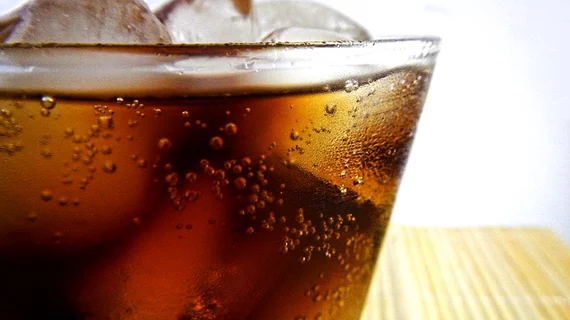Artificially sweetened drinks linked to increased risk of stroke
Women who consumed multiple artificially sweetened beverages per day, including diet sodas and fruit drinks, were significantly more likely to die or suffer ischemic strokes over an average follow-up period of 12 years, according to an observational study published Feb. 14 in Stroke.
The data—and other observational studies before it—call into question whether low- or zero-calorie beverages are truly harmless replacements for sugar-sweetened drinks. However, due to the study’s observational nature and reliance on self-reported questionnaire data, it is impossible to prove whether the drinks played a causal role in these outcomes.
Nevertheless, drinking at least two 12-ounce artificially sweetened beverages (ASBs) daily was significantly associated with certain types of stroke, coronary heart disease and all-cause mortality among more than 80,000 postmenopausal women from the Women’s Health Initiative Observational Study. All participants were aged 50 to 79 at baseline and followed for an average of 11.9 years.
Compared to those who drank fewer than one ASB per week, those who consumed at least 24 ounces a day were more likely to meet the following outcomes after adjusting for diet quality and conventional risk factors:
- Any stroke (23 percent more likely)
- Ischemic stroke (31 percent)
- Coronary heart disease (29 percent)
- All-cause death (16 percent)
Both the researchers—led by Yasmin Mossavar-Rahmani, PhD—and the authors of an accompanying editorial acknowledged that residual confounding and reverse causality could be at play for these outcomes. It is difficult to distinguish whether individuals began drinking more diet beverages once they were already high risk or whether ASBs also played a role in driving up the risk of these cardiovascular events. Participants also reported their dietary and beverage habits for only one timeframe, so it’s possible those patterns could have shifted over time.
“Consumption of artificial sweeteners has been shown to result in sugar cravings and dependence, impaired caloric compensation resulting in appetite stimulation, increased consumption, weight gain, and glucose intolerance,” Hannah Gardener, ScD, and Mitchell S.V. Elkind, MD, MS, wrote in the editorial. “ASB may even impact glucose tolerance through mechanisms involving altered gut microbiota. Existing data on beverage consumption and obesity are largely cross-sectional and show that ASB consumption is more frequent among overweight and obese adults.”
Mossavar-Rahmani et al. also found the consumption of multiple ASBs per day was linked more strongly to adverse outcomes within specific groups of women. Those without previous heart disease or diabetes were 2.44 times more likely to have a small artery occlusion stroke if they were habitual diet beverage drinkers, while obese ASB drinkers without previous heart disease or diabetes were 2.03 times more likely to have an ischemic stroke. Black women without a history of these conditions were nearly four times as likely to experience ischemic stroke if they drank at least two ASBs daily.
Gardener and Mitchell said cross-sectional study designs are insufficient to explore the true impact of diet drinks on consumers, and added more work is necessary to separate the effects of specific artificial sweeteners.
“To better understand the impact of ASB consumption on vascular disease risk, investigators need to better capture the duration, patterns, and reasons for ASB consumption, as well as the role of confounding factors, like obesity and insulin resistance,” they wrote. “Weight change and dieting habits before enrollment into studies are likely important explanatory factors for the observed associations between ASB consumption and cardiometabolic health.”
Until these limitations are addressed and researchers understand “who, if anyone, benefits from consumption of ASB,” the editorialists suggested water be recommended as the healthiest substitute for sugary beverages. Diet drinks may be useful to transition off of those other products, they said, but should be used as a short-term steppingstone toward water and other healthier options.

